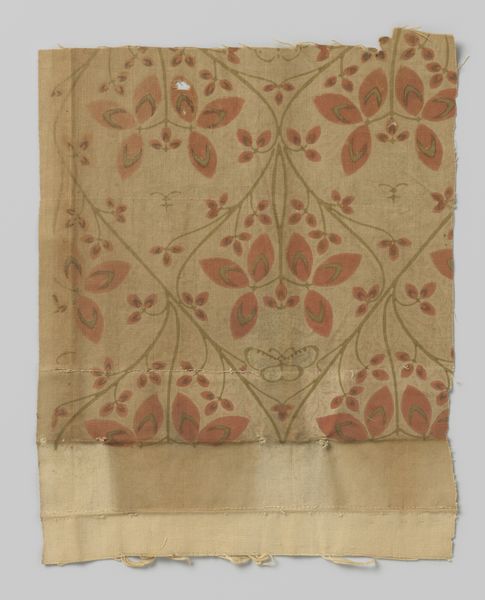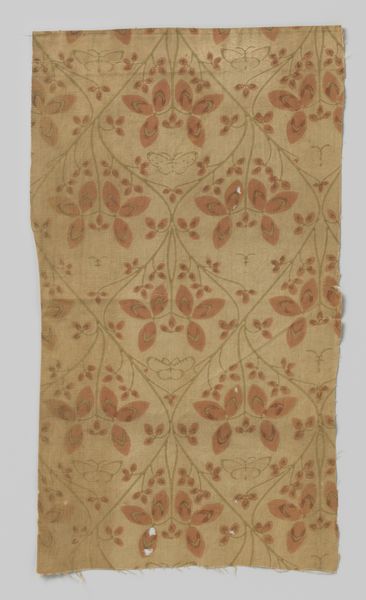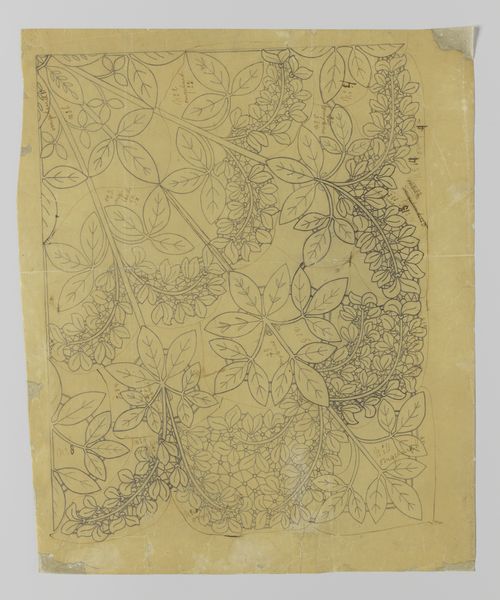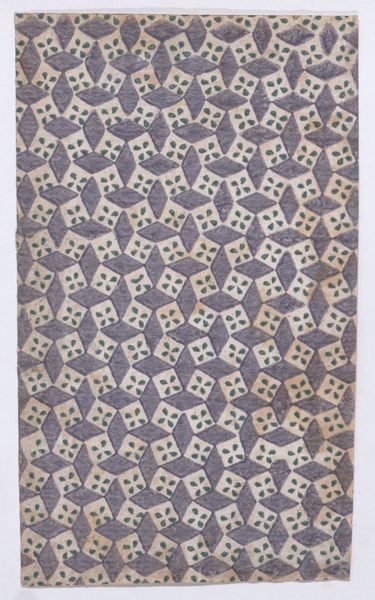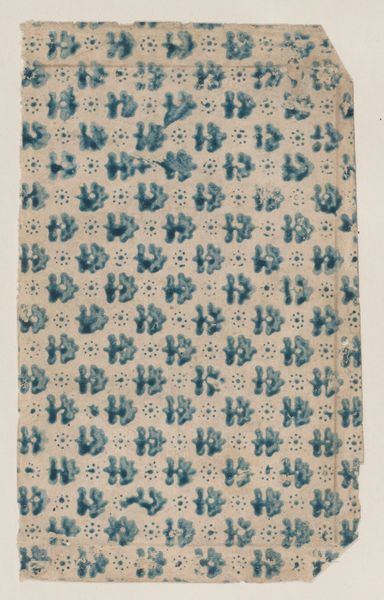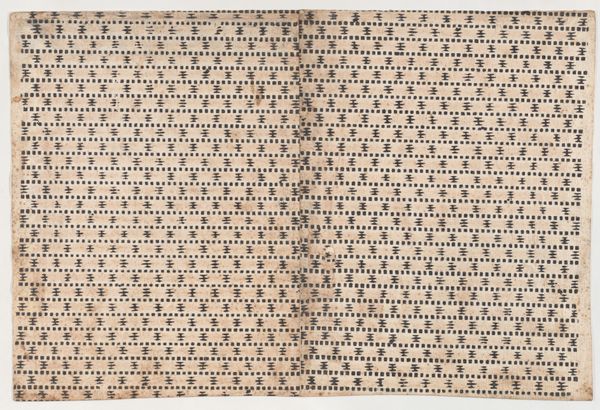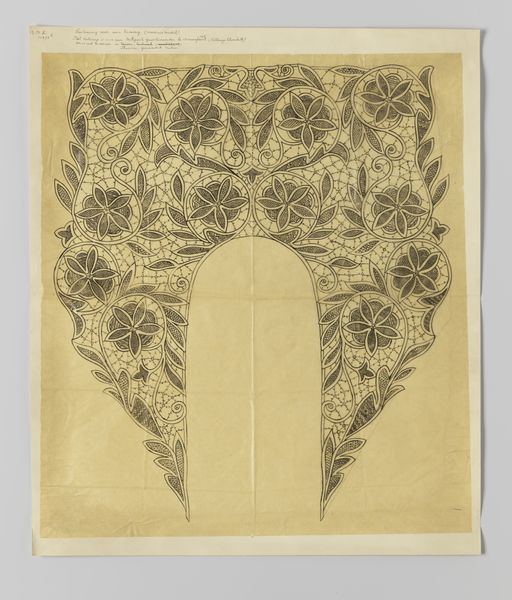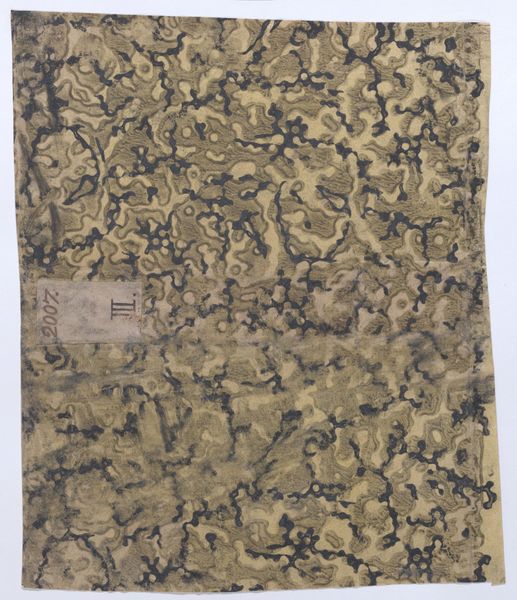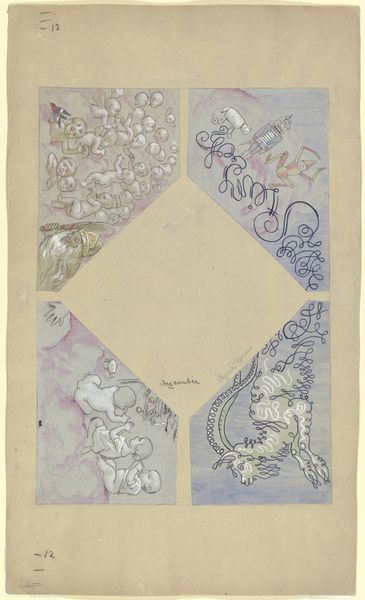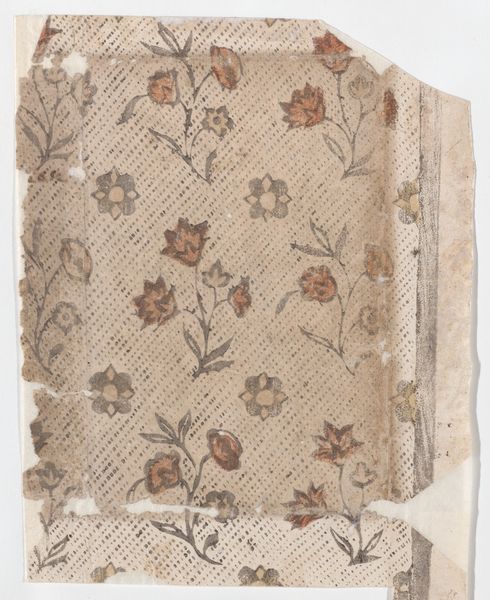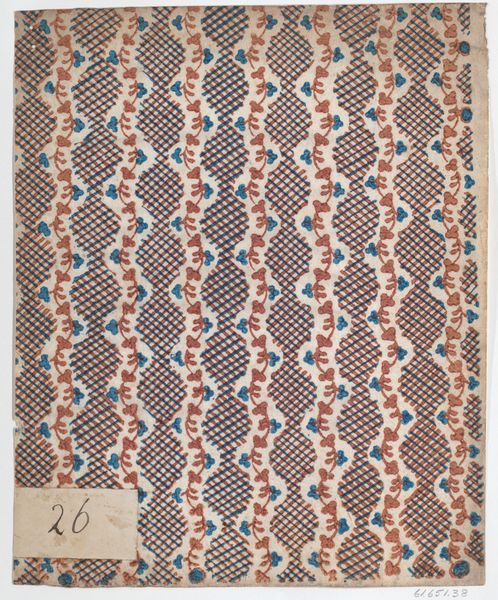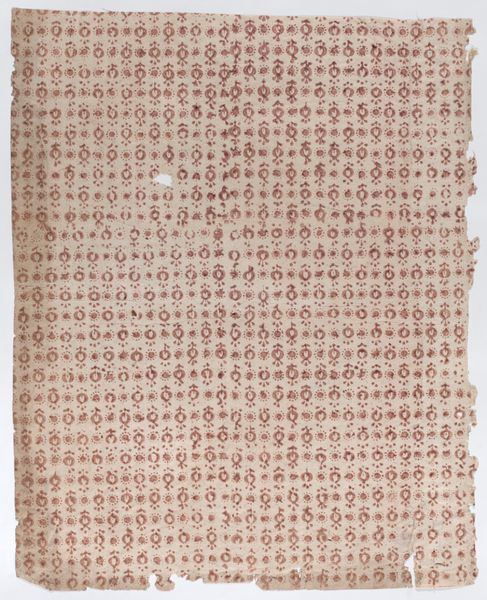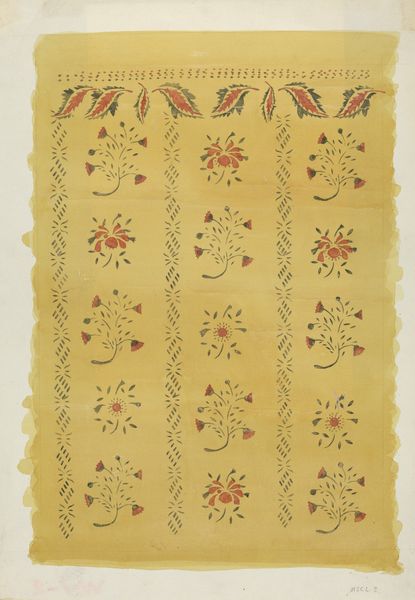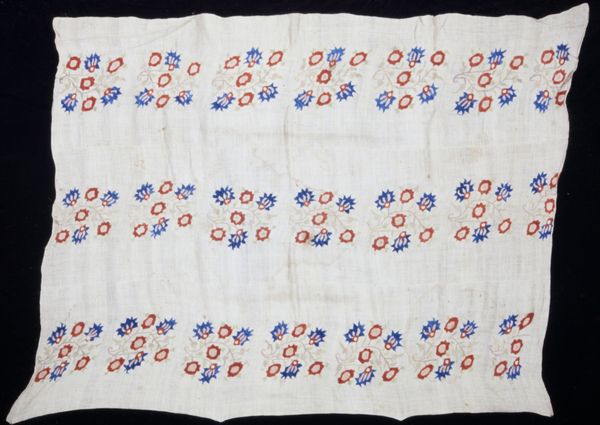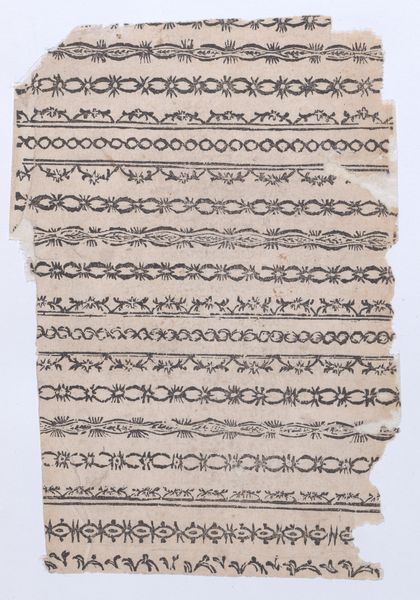
fibre-art, textile
#
fibre-art
#
textile
#
decorative-art
Dimensions: 88 1/2 × 68 5/8 in. (224.8 × 174.3 cm)
Copyright: Public Domain
Curator: Here we have a fascinating example of American decorative arts from around 1760: a bedcover with appliqued crewel embroidery motifs. It currently resides here at the Metropolitan Museum of Art. Editor: Ah, yes! My immediate impression is that of a faded dream. The piece seems simultaneously intricate and muted, as though a story's trying to peek through from behind the fabric's warp and weft. There's something soothing about the faded hues, wouldn’t you agree? Curator: Undeniably. From a formalist perspective, the most striking feature is the dynamic interplay of organic forms and linear structures. Note how the sinuous vines and stylized floral motifs establish a rhythmic visual experience. It also cleverly merges weaving and fiber art to underscore an engaging discourse. Editor: Discourse indeed! And it makes me wonder about the Cabot family, whom the bedcover belonged to. The act of creating something like this must have been immensely comforting. I’m thinking about the artist and her focus: meticulously layering the motifs—almost like tending a miniature embroidered garden. What personal stories did these flowers contain for her? Curator: Well, historically, crewel embroidery offered women an important creative outlet, even potentially offering avenues for self-expression in a world defined by social restriction. Editor: Absolutely! One might even read it as an act of quiet resistance to pre-ordained expectations. Look closely, though—are those grapes tucked amidst the leaves? What did that mean to them back then, and what does it mean for us now? What are its modern parallels? Perhaps it has something to do with celebrating life and joy during dark or oppressive times…or is that too fanciful? Curator: Interpretations are inherently subjective, of course. One could analyze this from a cultural studies point of view, deconstructing prevailing aesthetic codes in relation to socio-economic hierarchies or gender. What matters is not a unified, stable essence but that we come away with a complex multiplicity of readings. Editor: I couldn't agree more. This bedcover speaks to a sense of artistry that deserves a closer look! The fabric whispers intimate secrets from long ago. Curator: Precisely! The piece underscores a deep consideration of form, structure, and visual language in relation to cultural norms, opening it to a world of semiotic and interpretive approaches.
Comments
No comments
Be the first to comment and join the conversation on the ultimate creative platform.
